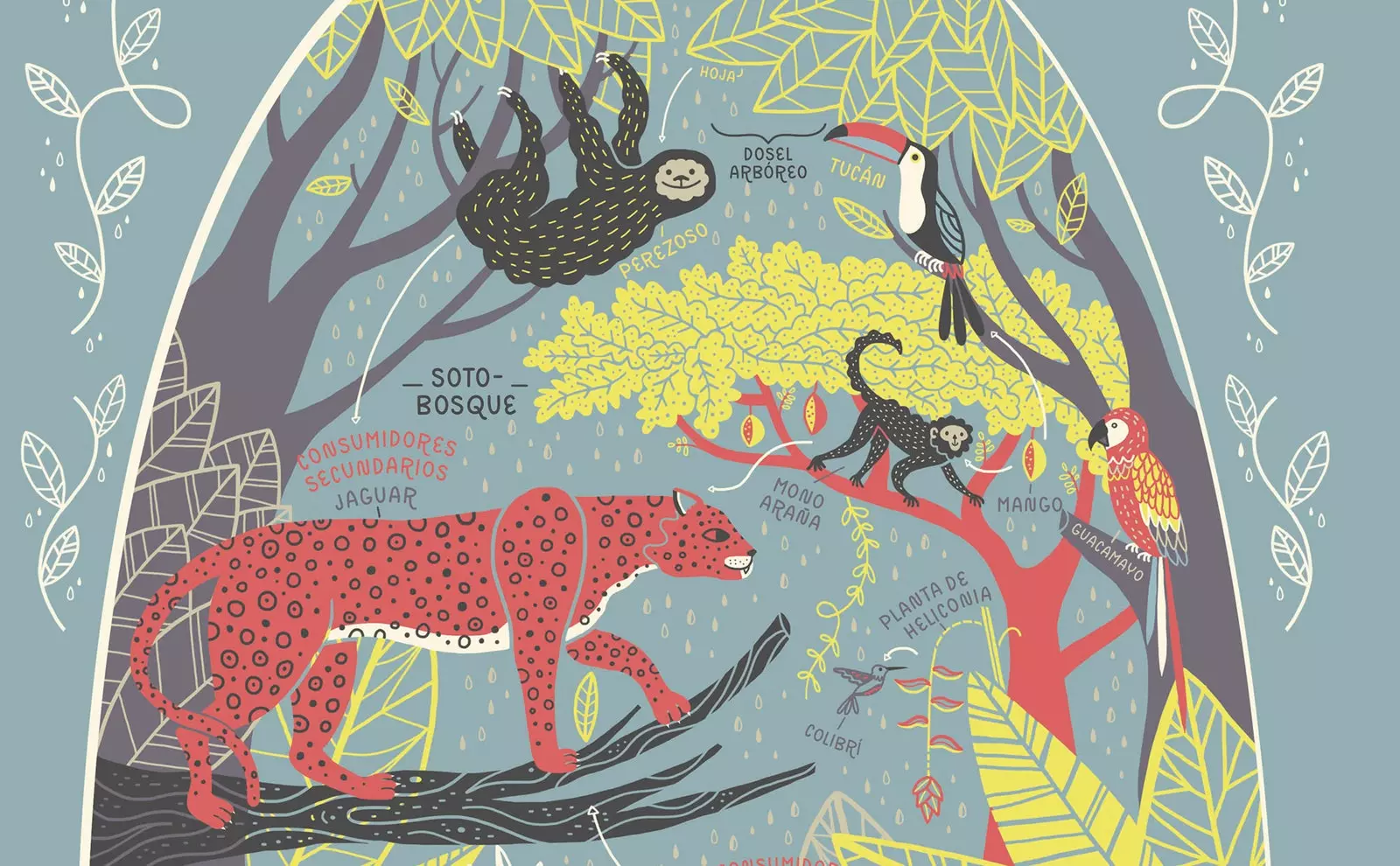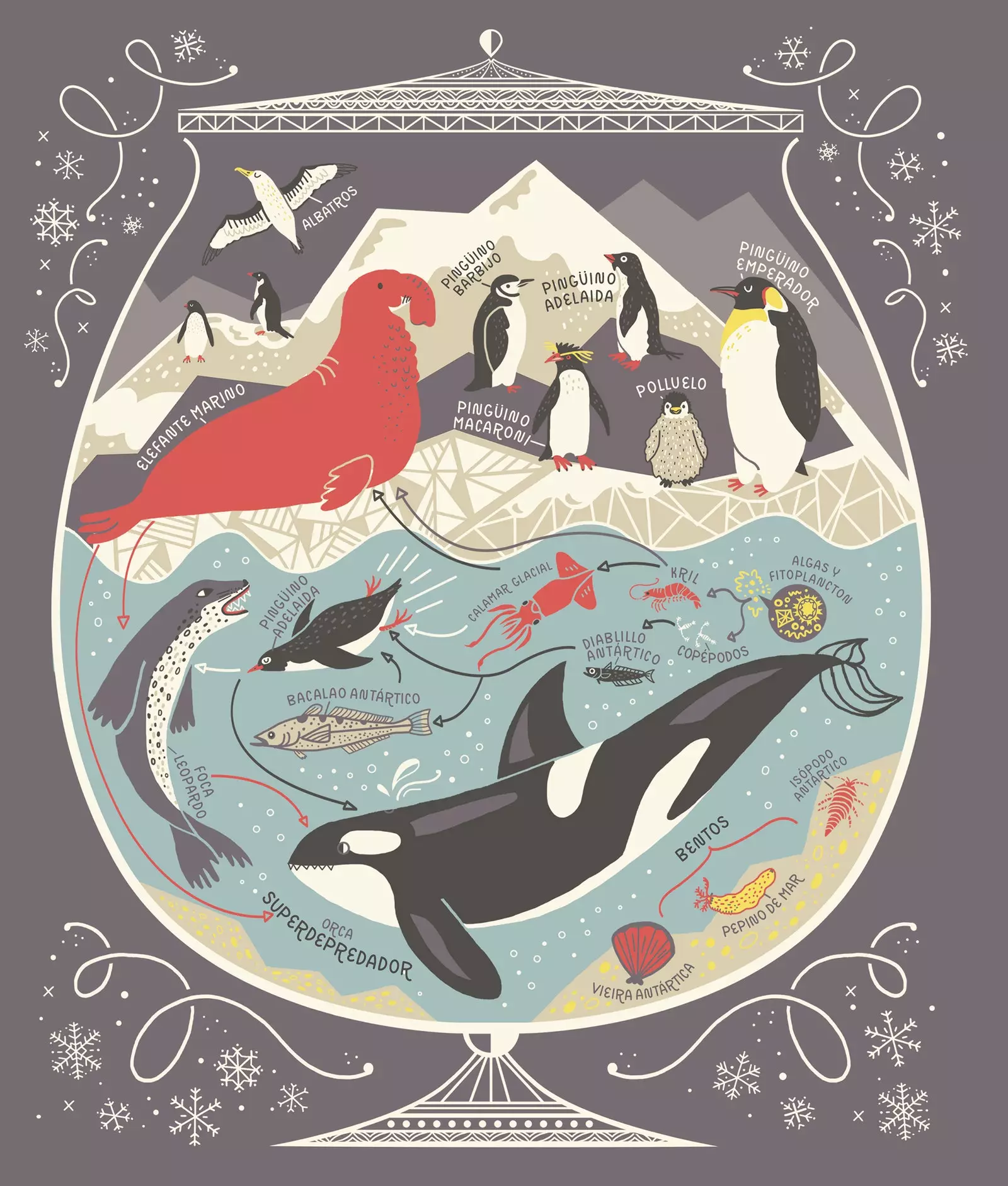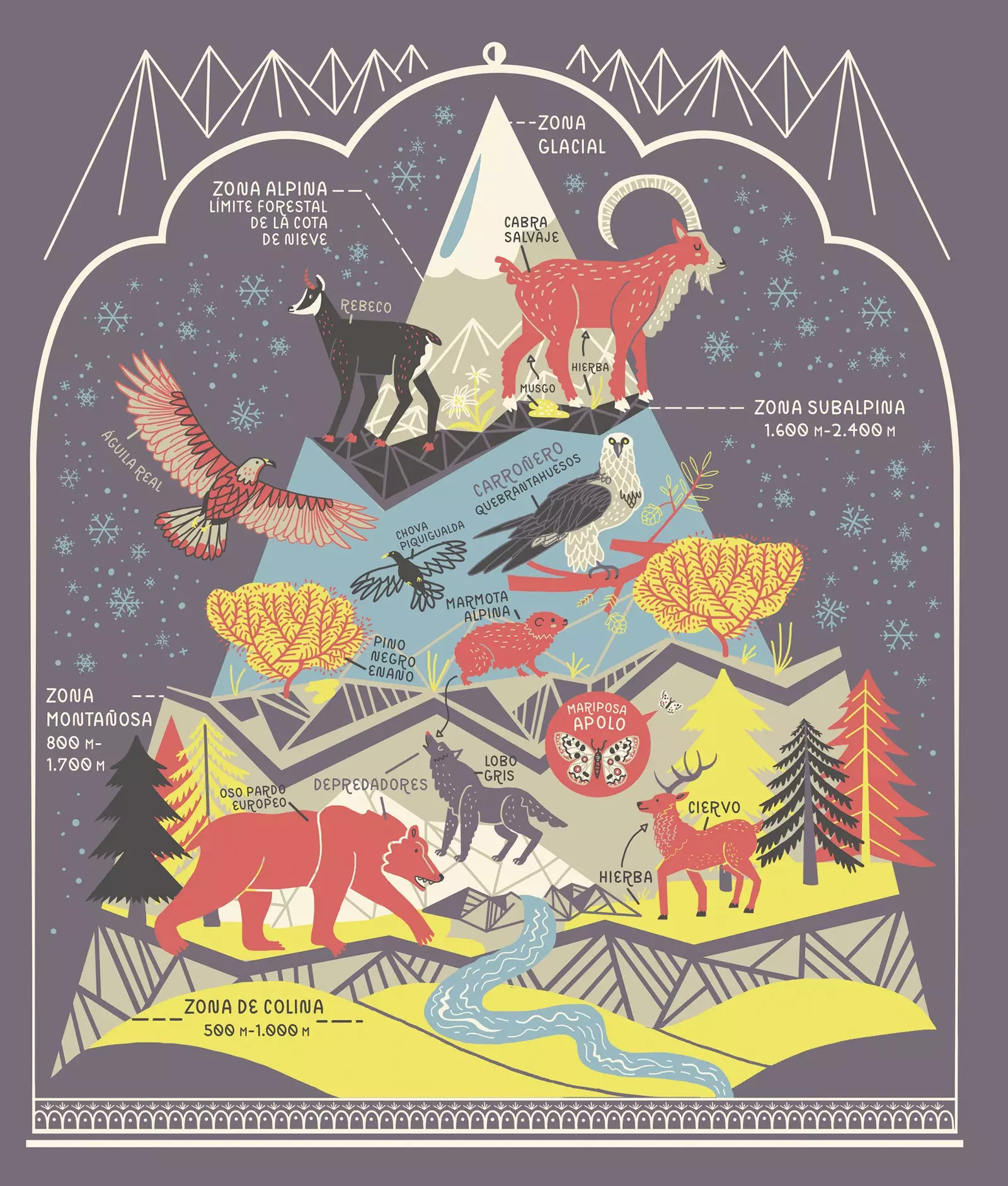
The tree canopy of the Amazon is so thick that the jungle remains in almost perpetual darkness.
For most of us to hear of ecosystems, cycles of nature or classification of living beings Sounds like going back to school. To memorize impossible names and to locate points in a geography that sometimes escapes us. But if the person who explains it does so with spectacular illustrations and curiosities of all kinds, the thing changes. And a lot.
This is what he has done Rachel Ignotofsky , passionate about history and science, convinced that through illustration, learning can be much more exciting.

There are an estimated six million Adélie penguins living in East Antarctica.
already proved it with women of science Y women in sport , and in The amazing works of Planet Earth (Nordica Libros), she wants to help us understand our world and its ecosystems. She is clear that "the first step to protect our planet is to learn more about it", and this is her (enlightened) contribution.
In her pages we discover, for example, that bluefin tuna accelerate as fast as a racing car or that giant clams can weigh up to 200 kilograms and live more than 100 years. That the redwood tree grows an average of 1.5 cubic meters per year (like 3.2 million pencils) or that in the Mojave desert there is the rarest fish in the world. That at the Cape of Good Hope there are 8,500 plant species and that South Florida is the only place in the world where crocodiles and alligators coexist.
She also explains the benefits of the different ecosystems for the planet: how mangroves protect the coast from erosion and storms and serve as nurseries for many marine animals before they swim to the ocean; how the eastern Siberian taiga is essential for absorbing CO2 from the atmosphere and how it helps regulate global climate; What the reflection of sunlight on the snow of the Arctic Circle and the Antarctic tundra make it possible to cool the planet; or how the abundant vegetation of the tropical Andes helps to generate oxygen and absorb 5.4 tons of carbon each year, which is equivalent to the annual emission of a billion cars.
“Nature and fauna provide us with countless benefits”, Ignotofsky says. But she also warns us of the dangers that exist if we do not do things well.

The melting of the Alps nourishes the majority of European rivers and seas
"Tons of garbage are thrown into the sea every year, devastating marine life." An example is the garbage island in the Pacific, which already occupies an area roughly the size of France. “Overfishing is also a bigger problem: Right now we fish twice as much as the ocean can hold.”
A list to which you add light pollution, that it can confuse and alter the abilities of nocturnal animals; the swamp drainage vitally important, the logging, the poaching that brings species to the brink of extinction, the global warming causing uncontrolled fires and endangering glaciers, unsustainable farming techniques that damage natural resources… and a long etcetera.
"If we understand the world in a different way - says this writer and illustrator -, we can begin to protect it". And this book brings us a little closer to this goal.
